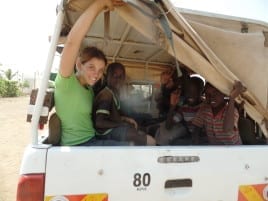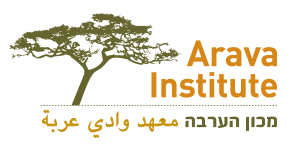Furrows in the Desert (FID) is an agricultural development project introducing sustainable agriculture in the Turkana region in northern Kenya, to contribute towards food security and the generation of income for the local population. FID is a community-participatory joint program of the Arava Center for Sustainable Development, the Missionary Community of Saint Paul the Apostle, and Brit Olam, and local semi-nomadic communities of north Turkana. Arava Institute alumna Noa Gluskinos joined the project at the beginning of February to volunteer for six months and will be sending us monthly impressions of her experience at the farm.

Lobur is a charming and surreal place located in the heart of the Great Rift Valley in the arid Turkana desert. In Lobur I found the Missionary Community of Saint Paul the Apostle which is also home to the staff of the Furrows in the Desert project to which I came to volunteer. The residents of the house are: Roy and Tikki, a couple from Kibbutz Ketura who are currently running the farm, Ayelet – another Israeli volunteer –, and Martin, a Turkana man who speaks English better than all of us together and works as our translator.

The trainees are divided into four groups, and each group receives a small shamba – farm in the Turkana language – where they grow two types of crops. After the morning exercises, Roy assigns tasks and each group examines its Shamba for issues with irrigation, weeds, and plant diseases. In addition, there are always the continuous upkeep jobs to take care of, such as compost preparation, planting, picking, distribution of produce, and fertilization.
During my first week on the farm, the trainees went on strike and did not come to work. They were demanding a salary because while on the course, they are not working but need to continue to support their families. Albert, the Spanish priest from the mission, is an expert in fixing problems in the community and speaking to people’s hearts, and he solved the issue, and the trainees returned to work satisfied with the promise to receive
I am still a little in shock that I am even in a place like this – the lifestyle, culture, dress and language of the people here are very traditional and completely different from what I have seen in the world until today. The heat here is a special phenomenon you have to get used to (around 40 something degrees at noon) and the pace of things here is “pula, pula” – slowly, slowly in the Turkana language. So I am slowly adapting to the culture and the new framework I entered. I hope that I can really help to improve a little bit the not so simple lives of the people who live here.
From Turkana, Kenya,
Noa Gluskinos

